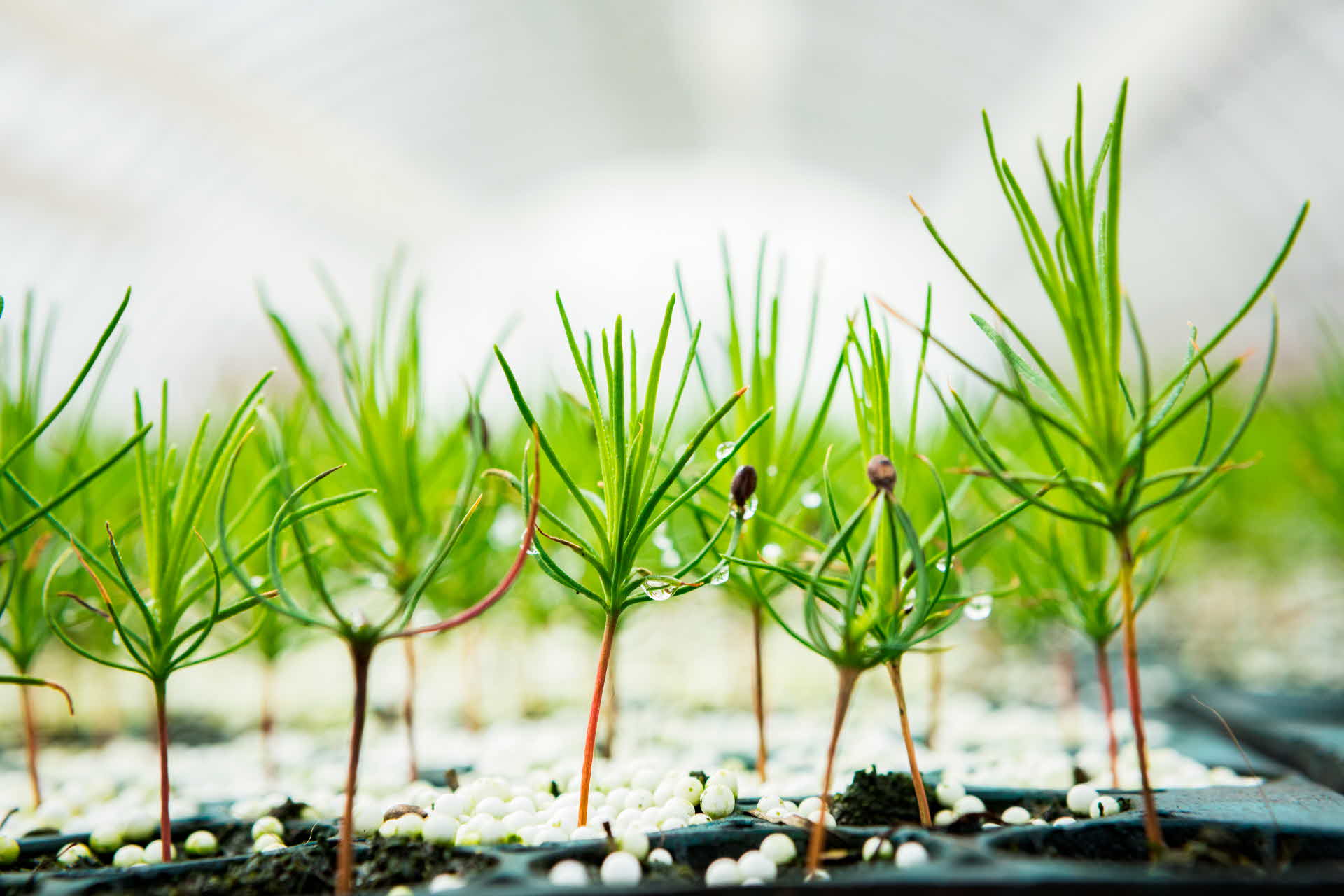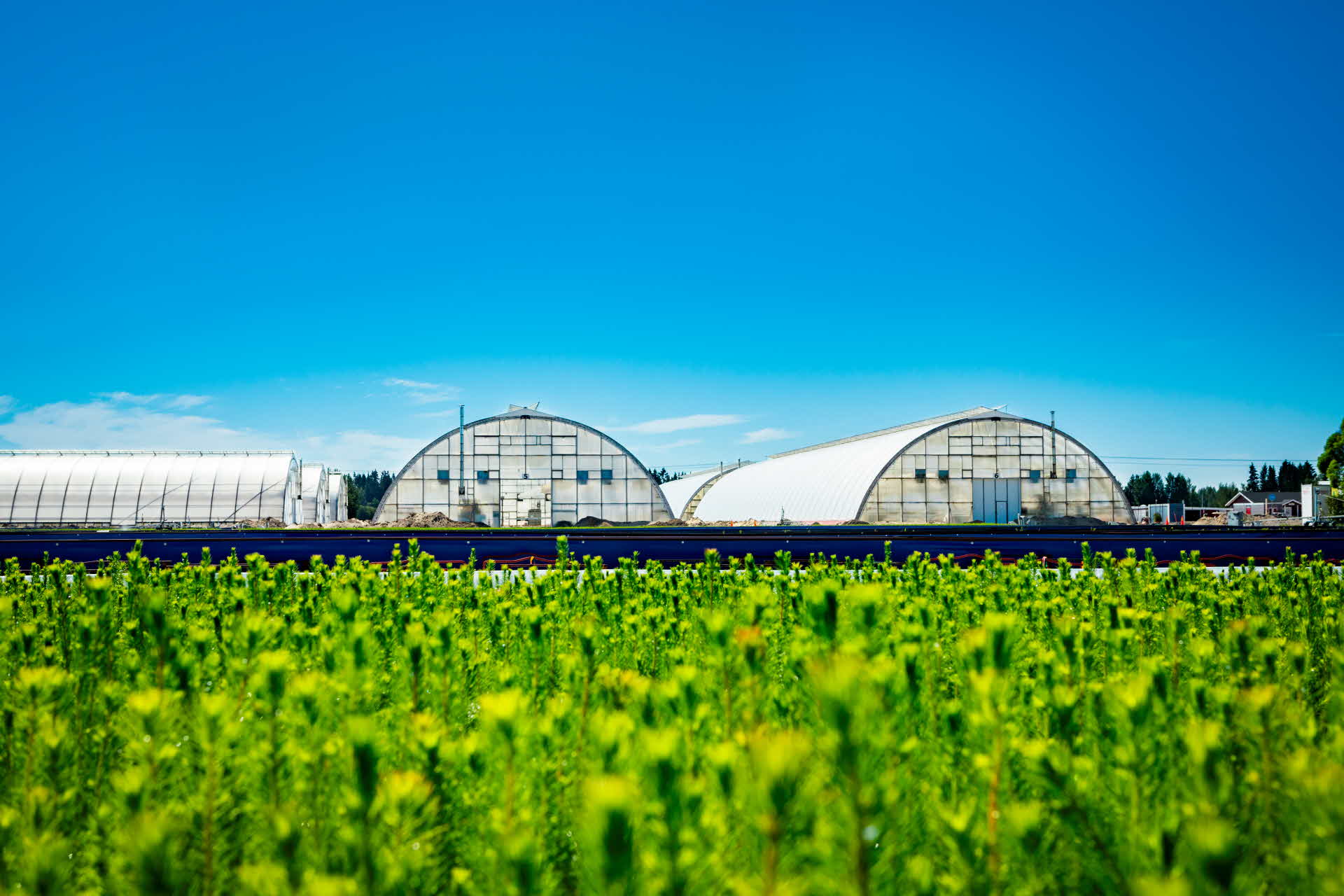
- MEDIA
- FORESTS OF THE FUTURE
Where climate-benefit-rich forests of the future are created
- Article
With a combination of well-managed forests and high-quality cultivated seedlings, the size of Sweden’s forests increase every year. Nurseries have long been a key part of the development of the forestry industry and are becoming increasingly important in the face of climate change. Laboratory engineer Jeanette Hammarström, from SCA NorrPlant, talks to us about SCA’s cultivation activities.
What is the role of the nursery?
“The nursery is tasked with suppling forests with cultivated seedlings. We enable reforesting after an area has been cleared. This ensures the constant growth of the forest stock and enables forests to grow and sequester large amounts of carbon dioxide. By planting more trees than we harvest, we get more from the forest and increase net growth.”
What advantages do cultivated seedlings offer?
“Today’s cultivated seedlings grow 25 per cent better than uncultivated forests, which demonstrates the importance of the work we do here. Our cultivated seedlings have better wood quality, are more resistant to attack and disease, and are better equipped for climate change than trees that regenerate naturally. As cultivated seedlings also grow faster, trees sequester more carbon dioxide, and we get access to more climate-smart raw materials.”
How do you cultivate a seedling?
“Cultivation begins with the selection of high-quality trees. Seeds are taken from these trees and seedlings grown from them. In order to get as many of these specimens as possible, they are grafted onto ‘standard seedlings’. When these saplings grow and begin to flower, they cross-pollinate with each other naturally. When the female plants develop cones, these are picked, and the seeds removed. It is these seeds that become seedlings at the nursery. This is done year after year to continuously produce better quality seedlings equipped for the challenges of the future.
“We grow a large variety of seedlings from seeds with different origins depending on the characteristics we are looking for. Of course this differs a lot in an elongated country such as Sweden, because seedlings are subject to different conditions depending on where in the country they are planted.”
Describe the planting season.
“The planting season starts straight after the last frost and the season ends when the frost returns. It’s important that we produce seedlings that are the right size and in the right phase for planting throughout the planting season. Seedlings are therefore grown in batches, so you can monitor their growth phase and decide when they are ready to be planted. SCA NorrPlant has extensive experience, so we plan in advance when seedlings will be ready for planting.”
What is the importance of seedling cultivation to the forestry industry?
“The nursery’s work is incredibly important. Planting is the most effective and efficient way to grow new forest. Since we want forests that generate added value, it is important to produce seedlings capable of doing this. Good seedlings create good forests. With controlled planting, we increase seedlings’ chances of survival, their growth rates, and their resistance to pests.”
What is the goal of the nursery’s work?
“Our goal is to produce seedlings that will survive in the forest, so quality is paramount. Currently, not all seedlings survive once they are planted in the forest. We work to cultivate seedlings to ensure that 100 seeds will become 100 seedlings that survive in the forest. Our major challenge right now, even for us, is climate change. Drought, fungal attacks and wild animals eating seedlings are some of the many factors that affect seedlings’ survival.”
How advanced are the nurseries?
“SCA NorrPlant has a completely unique lab in the forestry industry that focuses solely on seedlings and our activities. We examine seedlings’ vitality, the relationship between roots and green parts of plants, and nutrient composition. This enables us to see how they can establish themselves in forests and woodland. We grow our seedlings in closed containers, so they have nutrient bags around the roots. With the lab, we ensure that seedlings get all the nutrition they need, giving them the best possible chances to acclimatise and absorb nutrients once they are in the forest.”
What is the nursery’s greatest challenge?
“Climate change means that we have to prepare our seedlings for new challenges, such as alien species of insects and plants. The seedlings have an important role to play in sequestering carbon dioxide. We want to maintain today’s quality, increase seedlings’ resilience and help them adapt to climate change, including protection from fungal attacks and resistance to weather. The long time horizon makes it difficult to know which traits are needed, as seedlings planted today will not be harvested for another 100 years.”
How will the tree of the future look?
“Their outward appearance will not have changed that much. Our focus for the seedlings of the future is to deliver a product that provides the highest possible value for the end products that they will be turned into. Forests will have to generate high yields, so seedlings need to deliver for us to achieve this.”

